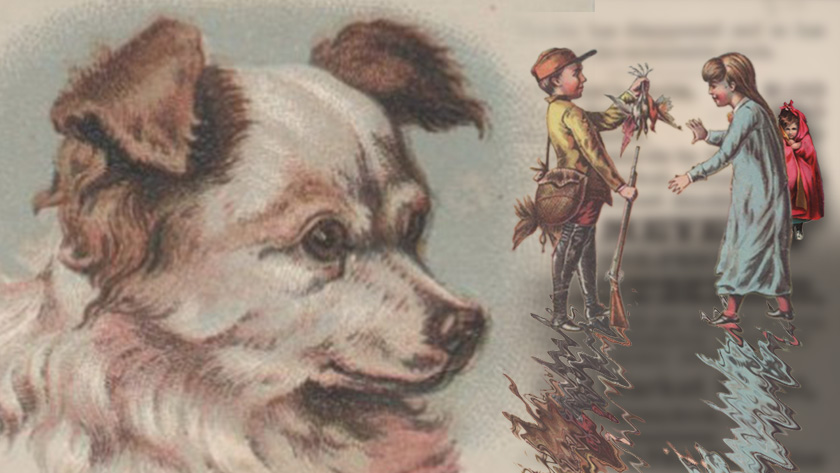
May I Have Your Card and Give You Mine? The Pfeiffer Trade Card Collection
By David Cardillo, Digital Collections and Preservation
We’re excited to continue our series spotlighting collections now available on our new digital platform, Quartex, with a look at the Gordon A. Pfeiffer Nineteenth-Century Delaware Trade Card Collection.
But what exactly is a trade card? Think of it as the ancestor of the modern business card. Trade cards typically included the name of a proprietor, business address and contact information, often paired with lists of goods or services and eye-catching illustrations.
This fascinating collection largely features trade cards from merchants located on or near Wilmington’s Market Street. Together, they highlight the growing availability of goods and services in Delaware’s downtown city centers during the nineteenth century. The vibrant, highly decorative cards also reflect the evolution of advertising as it began to target a rising middle class — and many reveal the social attitudes of the time regarding race, gender and class. Pfeiffer’s original arrangement of the collection is preserved: two alphabetically organized series — by Merchant and by Location.
Below are a few examples from the collection:
The first one depicts Little Red Riding Hood on the front, while the back promotes a cure “for bilious disorders and all troubles arising from a torpid or congested liver.”
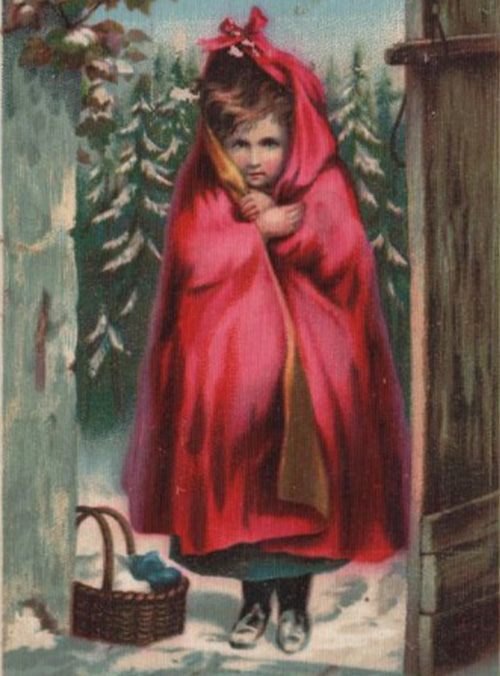
Color illustration of girl standing in a doorway wrapped in a red cape against a snowy forest background in the snow.
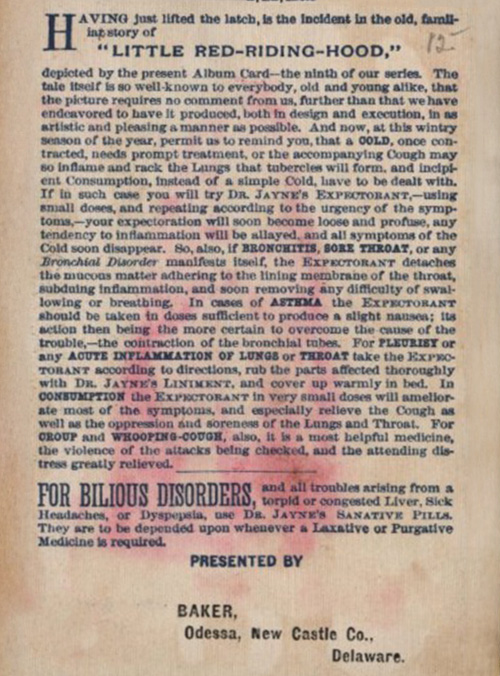
Textual advertisement for Dr. Jayne’s products. Text identifies illustration as “Little Red-Riding-Hood” ninth in their Album card series. Textual Baker business information.
Another example is a card from Meyers, a clothier, advertising men’s suits — complete with an attention-grabbing illustration on the front and details on the back.
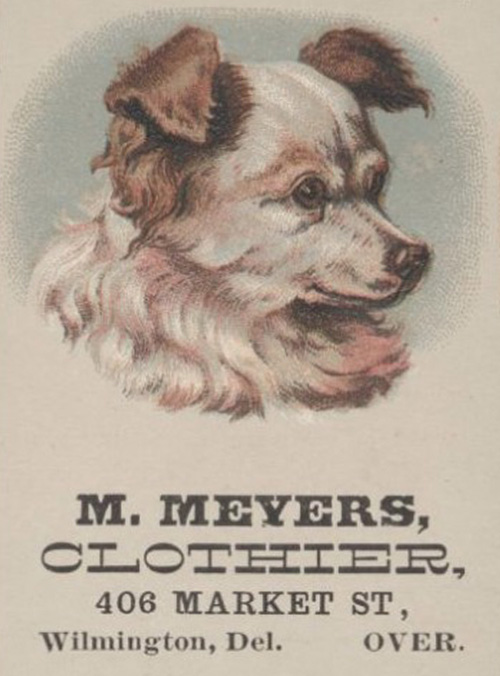
Color illustration of a portrait of a dog. Textual business information.
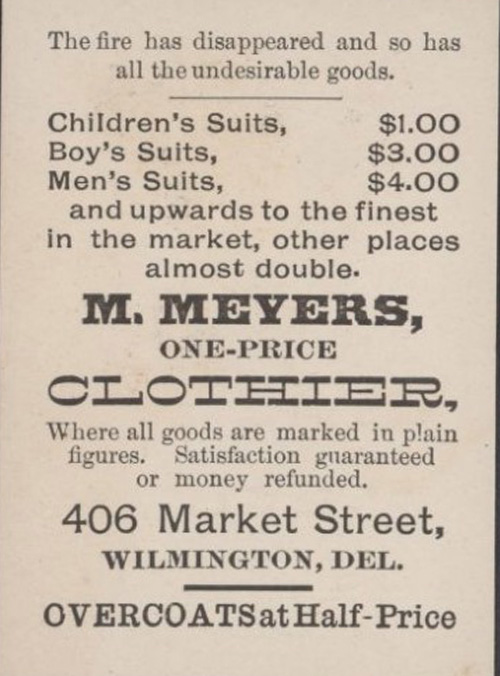
Textual advertisement and business information.
Not all trade cards had such a design. Here is an example from Sam E. Smyth’s China, Glass and Crockery, which had illustration and proprietor information on the front with a blank back.
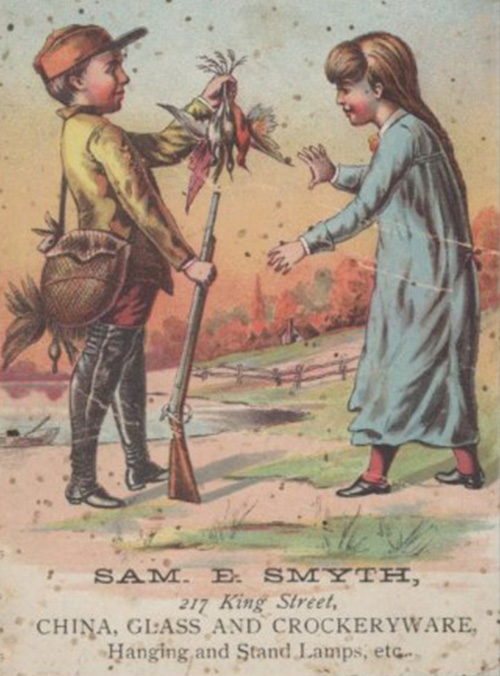
Color illustration of a young hunter giving a young girl a bunch of dead birds. Textual business information.
The collection also includes cards from businesses like J. and J. N. Harman’s furniture store, showcasing elegant furniture available at the time.
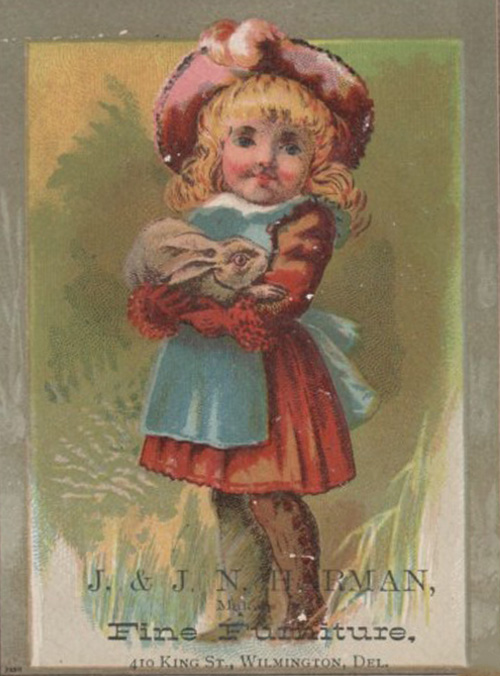
Color illustration of a young girl holding a rabbit. Textual business information.
You can explore even more of these colorful glimpses into Delaware’s commercial past through the digital collection — and learn more about the physical collection via the Special Collections finding aid, which mirrors the digital archive.
